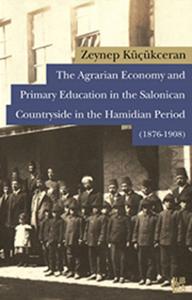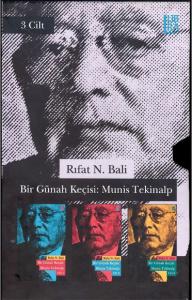The Agrarian Economy and Primary Education in the Salonican Countryside in the Hamidian Period1876-1908



As a result of the modernization process transforming much of the world in the nineteenth century, the changing structure and function of the state necessitated the development of a relationship between states and their subjects. In the context of this relationship, states used various instruments to monitor, control, and shape their subjects in order to ensure the survival of the state machinery. Education acquired a pivotal importance in shaping subjects according to state policies. In the Ottoman Empire its importance also began to be perceived in the first half of the century, but it was Hamidian era that such a policy manifested itself most clearly. Yet, for the people living in the villages, it was the agrarian economy that would continue to determine and shape their lives. Thus villages became a field of struggle between the state, which was attempting to penetrate rural life (and, by extension, the lives of the peasants) through education, and the realities of an agrarian existence and the economic and social relationships that it creates. For that reason, a history of education without a comprehensive analysis of the village conditions would be incomplete. This book aims to fill this blank in the history of education by focusing on the socio-economic structure in the villages that derives from agrarian economy. In doing so it also offers new sights to the field of social history through a close examination of the lives of peasants and the complex relationships between them.
Table of Contents
Acknowledgements
Chapter 1 - Introduction
Chapter 2 - The Organization of The Education System
- The Central Organization of Education System
- The Development of Bureaucratic Organization
- A Shift From Sıbyan to İbtidai?
- The Change in the İbtidai School Curriculum
- The Coexistence of Sıbyan and İbtidai Schools
- The Provincial Organization of the Education System
- The Bureaucratic Level
- The Provincial Education Councils and Provincial Education Directors
- Expanding the Organization To The Smaller Administrative Units
- The Provincial Education Inspectors
- The Reports of the Inspectors, Members of Education Councils and Education Directors
- Conclusion
Chapter 3 - Salonica
- The General Character of Agriculture In The Region
- The Financial Features of Agriculture
- The Agricultural Products
- The works in Agricultural Season
- How Agriculture Govern the Lives of People: The Observations of Frederick G. Abbott
- Number of Schools
- The Problems in Estimating the Actual Number of Schools and of Students
- Conclusion
Chapter 4 - Agrarian Economy and Primary Education
- Economic Difficulties and Education
- Educational Expenses and Other Problems
- Financing of Primary Schools: Applications, Institutions and Corruptions
- The Office of Village Head (Muhtar)
- Educators in Tobacco Business
- The Imam-Teachers
- Rejection of Schools: Affording the Expenses as an Excuse or as a Reason?
- Peasant Children Going To School
- A Child's Desire to Attend School
- Peasants' Attitudes Towards Schools and Teachers
- Traditional Knowledge vs. Scientific Knowledge
- Agricultural Books and Courses at the Primary School
- Agricultural Schools and Model Farms
- Conclusion
Chapter 5 - Conclusion
- Appendix A - Table of Content of Çiftçilik Dersleri
- Appendix B - Curriculum of The Agricultural School in Salonica
- Appendıx C - Map of The Province of Salonica
Bibliography















